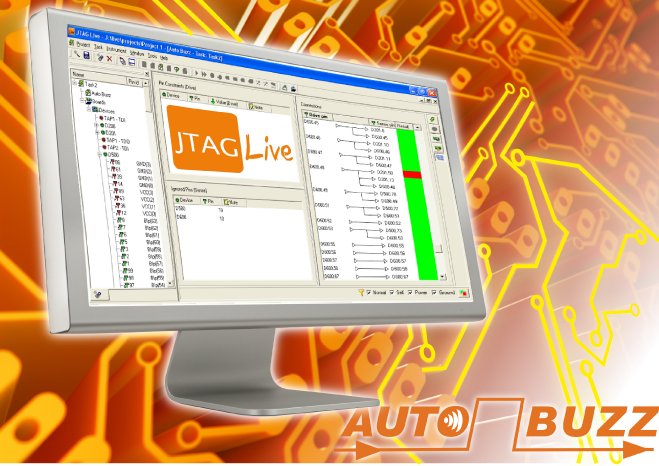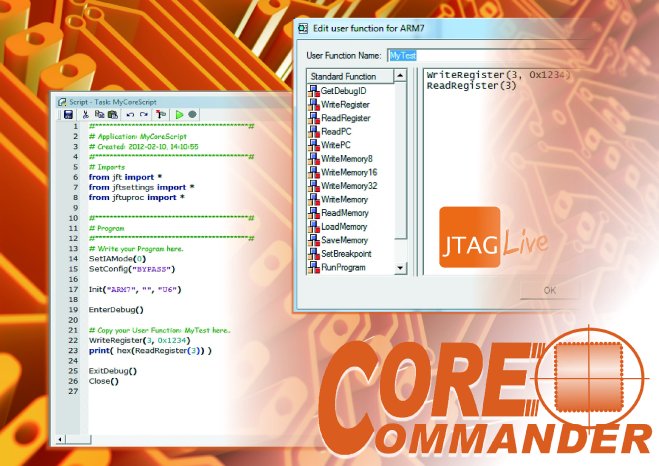Autobuzz
JTAG Technologies is showcasing at Embedded World Autobuzz, a totally unique tool that effectively learns a connectivity signature of all boundary-scan parts within a design from only the BSDL models of those parts. Autobuzz expands the "seek and discover" mode of BuzzPlus and automatically gathers circuit data of a known good board and then performs a full connectivity compare against the faulty circuit. Autobuzz is a useful tool for repair and rework technicians, especially when design data is missing or incomplete.
Benefits:
Automatic seek & discover mode
Unlimited net compare
No CAD data required
Quick and simple to use
JTAGLive CoreCommander
By using JTAGlive CoreCommander engineers can activate the on-chip debug modes of a range of popular cores to affect kernel-centric testing. CoreCommander support includes ARM, Cortex, XScale, PowerPC and TriCore architectures. CoreCommander routines are suitable for diagnosing faults on "dead-kernel" boards in either design debug or repair, since no on-board code is required to set memory reads and writes.
CoreCommander is Python-based and complements the established JTAGLive Script product, allowing access to mixed-signal parts such as ADCs and DACs and also synchronised testing to full boundary-scan devices. Python-embedded mode uses a similar structure to that featured in the JTAGLive Script product, allowing CoreCommander functions to be embedded into Python code to create re-usable test modules for specific tests.
JTAG Technologies and the Embedded Industry - Comment by Peter van den Eijnden, General Manager M JTAG Technologies
R&D, manufacturing and (field) service repair can all benefit greatly from the possibilities offered by the JTAG interface and logic in today's modern electronic devices. In manufacturing the main JTAG applications are board test and in-system programming of cPLD's and flash memories. JTAG Technologies is offering a vast range of high performance products for these manufacturing applications since its beginning.
Also R&D engineers use the JTAG interface for in-system programming of cPLD's (JTAG Programming) and flash memories. In addition software engineers increasingly use the JTAG interface for debugging their (embedded) software using the emulation / debug logic built-in into modern microprocessors.
Like software debugging also hardware debugging can well be supported via the JTAG interface. JTAG Technologies developed its JTAG Live product family specifically for this purpose. The JTAG Live products enable hardware design engineers to deploy the JTAG test and debug capabilities embedded in various chips for debugging their (prototype) hardware, helping them to verify that connections between pins are present and a processor is capable of writing to and reading from its memory and peripheral devices without writing any specific microprocessor code.
End of industry comment
About JTAGLive
JTAGLive is the economic easy-to-use family of board debug tool JTAG Technologies. The original offering for JTAGLive, first introduced in November 2009, comprised of three family members: Buzz, Clip and Script. Last year two new products were added to this family: BuzzPlus and AutoBuzz.




